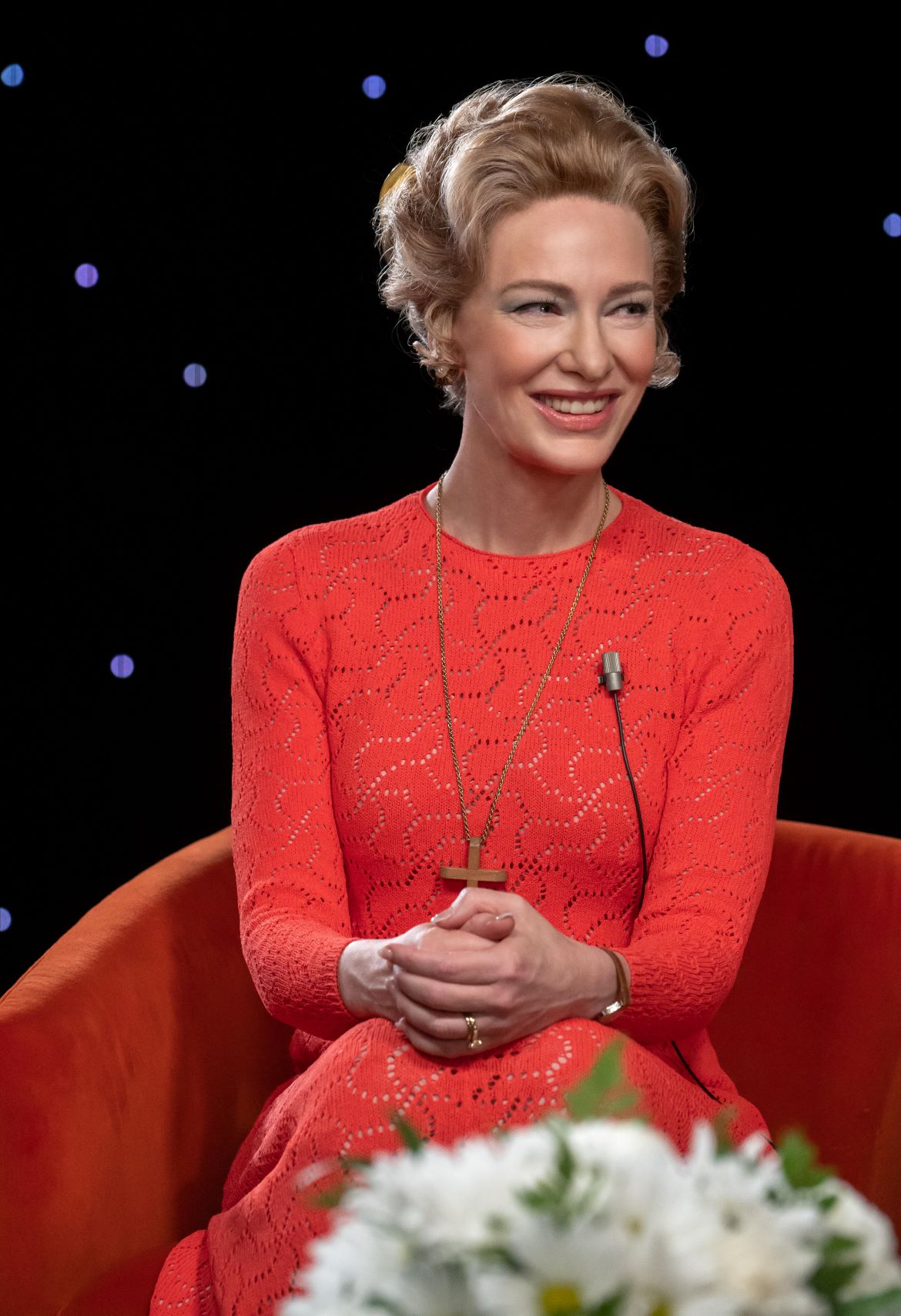How ‘Mrs. America’ Portrays Its Characters’ Politics Through Fashion
Hulu released the FX-produced TV series Mrs. America earlier this year. The show’s cast, led by the incomparable Cate Blanchett, rock iconic 70s fashion. But, each character does that in their own unique way. Mrs. America’s costuming is cleverly designed to draw a distinct line between the two sides of the political argument over the Equal Rights Amendment.
‘Mrs. America’ costuming shows off the characters true colors — politically, that is

The New York Times recently published a piece on Hulu’s Mrs. America, making the case that the costume design in the series depicts a great deal “about our past and … our present.” The characters, based on real-life activists, are formed and solidified through their fashion choices.
“By their clothes, with all of their gender implications and stereotypes, we do know them,” the Times continued. “There are lessons in those closets, if we are willing to learn.” One of the most important of those lessons? Despite the fact that decades have passed since the events depicted in Mrs. America, we haven’t really come that far. Recall: “it was only three years ago that there was a protest to demand women be allowed to wear sleeveless dresses in Congress.”
“Despite how much things have changed, both in Washington and in what we wear, they have not, apparently, changed very much,” the article reads.
“We still have to fight for everything. We still use the same weapons,” Mrs. America’s costume designer Bina Daigeler shared with The New York Times. Daigeler explained that this idea is what fueled her decision to actually create many of the costumes, “instead of sourcing vintage.”
“She didn’t want the fit and fabric to look rooted in the past, but rather to bridge then and now,” the publication explained.
How the TV show portrayed ERA opponents like Phyllis Schlafly vs. Gloria Steinem reflected in their style
“The personal and political branding is achieved so effectively through consistent costume,” the Times wrote. In Mrs. America, style reflects the women’s ideological differences. The characters don’t always need to explicitly state their opinions when, for example, looking at their rad aviators will answer a lot of questions upfront.

Gloria Steinem, played by Rose Byrne, is rocking “straight hair and glasses, jeans and T-shirts.” These style choices “signal a rejection of … tradition.” The kind of tradition that her political rival, Schlafly, lives for.
Uzo Aduba as Shirley Chisholm dons “look-at-me prints and jewelry,” while Margo Martindale’s Bella Abzug is iconic in her “ever-present hat.” These fashion choices distinguish them from the more 50s-style aesthetic that Schlafly adopts.
Schlafly was on a separate mission. The activist founded “a grassroots movement of housewives,” Vogue reported. What did these housewives stand for?
… anti-abortion, anti-gay, anti-gender-role reversal, and basically anti-anything that went against the religion-backed belief that a woman’s only place was in the home and under her husband.
The New York Times writes that in Mrs. America, Phyllis Schlafly stands apart from her contemporaries in her “pastel peplum suits, her silk scarves tied just so around her neck, her neat square-heel pumps and carefully coifed wings of hair.” What’s more interesting about Schlafly, however, is the slight hypocrisy in her own image. The Times points out:
… her wardrobe effectively channels the 1950s Doris Day homemaker tradition, even while Schlafly’s own behavior (talk shows, debates, aggressive disinformation, exaggeration as a political tool) suggests an entirely different agenda.

Still, in Mrs. America, Schlafly (or, we should say, Blanchett), more than looks the part.
“Blanchett’s Schlafly symbolizes American female perfection in its most unattainable form,” Vogue writes.
The Hulu series ‘Mrs. America’ dressed its cast along ‘party lines’
Overall, it’s not so much about the specific costumes themselves as the obvious differences between them.
“The party lines are drawn largely through fashion,” The Times explains about Mrs. America.
Through the difference between the pie crust collars dusting her chin with ruffles favored by Schlafly and co. and the unbuttoned plaid shirts and peasant blouses worn by Ms. Steinem, et al.; between the A-line skirts of the Stop E.R.A. crew and the pants of the libbers.
Vogue agreed, arguing that Mrs. America “[draws] lines between the pros and the antis through the textures and colors of their clothing.”


